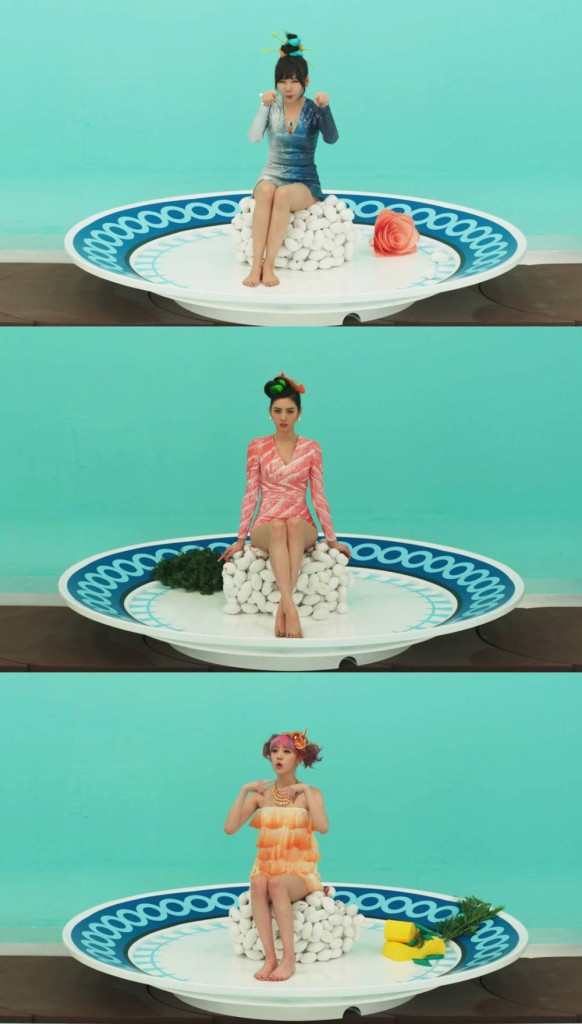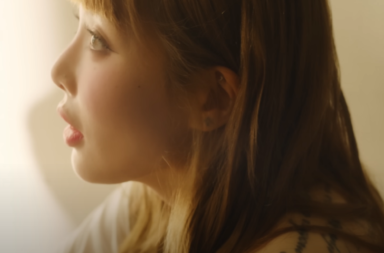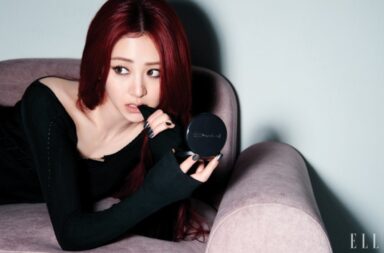 One of my favourite things about music is hearing different influences coming together to create a new and exciting sound. Some people call this fusion, I call it exciting. When it comes to music, I am all for sharing non-religious influences (we don’t want another hotly contested issue like with CL‘s “MTBD”), and seeing how they are used in different contexts.
One of my favourite things about music is hearing different influences coming together to create a new and exciting sound. Some people call this fusion, I call it exciting. When it comes to music, I am all for sharing non-religious influences (we don’t want another hotly contested issue like with CL‘s “MTBD”), and seeing how they are used in different contexts.
Unfortunately, though, there are times where that context is one with racist overtones. Recognising the origins of a particular musical feature is fine, and can be a respectful nod — Orange Caramel‘s “Catallena” is a fantastic example of this, where the original Punjabi folk song was given credit with nary a turban in sight — but this is more the exception than the rule.
Below, are four pieces of music, ranging from sound effects to entire genres, that, even if intended as respect, almost guarantee culturally insensitive foolishness from our K-pop faves.
1. Ululating
Whooping. Chanting. Tribal call. War cry. Mouth call. Wolololo. Ululu. HULULULU. Whatever you choose to call it (in English), the quickest way I can explain ululating is to let Lupita Nyong’o show us all what George Clooney can’t do (from 0:52):
As I’ve said in my review of Hyuna‘s “Red,” ululating is a call that is used in a host of different cultures (though Korean isn’t one of them), all with slightly different sounds and uses. Due to this plurality, I can’t say that including ululating in “Red” and Black Pink‘s “Boombayah” is offensive in and of itself but the hand gesture accompanying the ululating effect definitely is.
First off, it’s not even accurate: you ululate with your tongue, hands are not used at all. It was willfully ignorant white people who first cooked up that imagery, which has become part of the racist stereotyping of Native Americans. And now, that stereotyping is being continued in these dances.
2. Middle-Eastern Sounds
In Western music, the double harmonic and phrygian dominant scales are a popular choice for when a musician is looking for an ‘exotic’ sound. They emulate scales that you can hear in Middle Eastern and South Asian music, among others — the double harmonic is sometimes referred to as the Arabic scale for this reason. Aside from direct sampling, this is what producers have likely been using to get the Middle Eastern sounds you can hear in a number of recent K-pop songs, which follow current Western music trends — “Born To Be Wild” from the Hyoyeon–Min–Jo Kwon unit Triple T is a good example of this. And while the MV for “Born to be Wild” is insensitive to a few things (like our eyes), culture isn’t one of them.
Contrast this with WM Entertainment‘s girl group, Oh My Girl. This company and its group have done the most in exploiting the hook in “Windy Day” for media play. It started from the very beginning of promotions — in the above video, taken during the “Windy Day” comeback stage on Show Champion, the members discuss how fans have suggested renaming the ‘Windmill’ point dance to ‘Aladdin Dance’ and how they were now being called ‘curry-dols.’ All because of a hook.
A now-deleted tumblr post that has since gone viral documented the increasing cultural cringe: in addition to a V App live stream titled Windy Day? NoNo Curry Day!!! (in which the members made and ate a late night snack of curry), those two months of promotions also saw turban-related gags, stickers used as bindis, other idols referring to them as ‘curry-dols,’ and the worst example of all: a cover of Norazo‘s “Curry,” full of stereotypical moves that ape Yoga and Classical Indian dance, which can be seen on Oh My Girl’s official YouTube channel.
All of that — ALL OF IT — happened because of a few seconds of music on a single for a repackaged mini album. When I said that WM Entertainment and Oh My Girl were doing the most, I meant it in every sense. The distinct lack of sensitivity makes the desperation wafting off these actions even more cringeworthy. With few exceptions, WM’s management of Oh My Girl in general is just so embarrassing.
3. South Asian Sounds
See, I could have included this in the Middle Eastern Sounds part above, especially since this section is going to be pretty short — but mixing up the Middle East and South Asia has already been done by Oh My Girl, so…
I mentioned “Catallena” as an example of respectfully incorporating a South Asian music sample into K-pop; and MFBTY’s “Bang Diggy Bang Bang” would totally be in this category if it weren’t for the stray turban on Tiger JK‘s head, or the nethi chutti on Yoon Mi-rae‘s. I loved reading about how Tiger JK’s dad would listen to Indian music, and hearing that experience reflected in his own music now, but that doesn’t make it OK to use music as an excuse to raid the cultural closet.
4. Reggae
Coming back to Oh My Girl, their next single, “A-ing” features Skull and Haha — which means that there is very little chance of avoiding cultural insensitivity.
We have written about K-pop’s relationship with reggae in the past, and Skull and Haha figure prominently. Both insist on mimicking Jamaican Creole when there is no need to, and Skull insists on wearing his hair in what he probably thinks are dreadlocks, but is really just matted hair. Because reggae isn’t about electric guitars, syncopated rhythms, and political themes — it’s about the accent and the hair.
The hair is what G-Friend thinks reggae is about too, apparently. When it was mentioned on Weekly Idol that their first studio album included some reggae and were asked to act out the genre in a game of charades, SinB took to twisting her hair to mimic dreadlocks. Leader Sowon continued the anti-black and shadeist sentiment by stating that she was ‘already’ reggae because of her dark skin. And let’s not let Weekly Idol off the hook, either — the writers knew exactly what they were doing when they devised that question and added it to the script.
5. Hip Hop
How could anyone write a list like this and not include hip hop? You’d think the technical aspects of the genre would be more than enough to focus on, but apparently you need to dress up like gang members, braid your hair, and avoid showering to show how hardcore you are, at least for as long as promotions for whatever you are releasing last — then, you just take it all off and go for a different concept for your next release. There’s Zico, Taemin, and Krystal with their faux dreadlock looks for performances, MVs, and photoshoots; there’s also Kai‘s cornrows, the cringeworthy cherry atop the sundae of embarrassment that is “Wolf.” And then there’s Taeyang, G-Dragon, Jay Park, Feeldog … I could probably go on, but we’d be here all day.
This is by no means an exhaustive list, and there are countless more examples that could be used. What are the ones that come to your mind? Do you think K-pop could do more to avoid such instances? Let us know in the comments below!
(Buzzfeed, Instagram, Livejournal, Reddit, Twitter, V App, YouTube[1][2][3][4][5][6]. Images via: YG Ent., Pledis Ent.)


